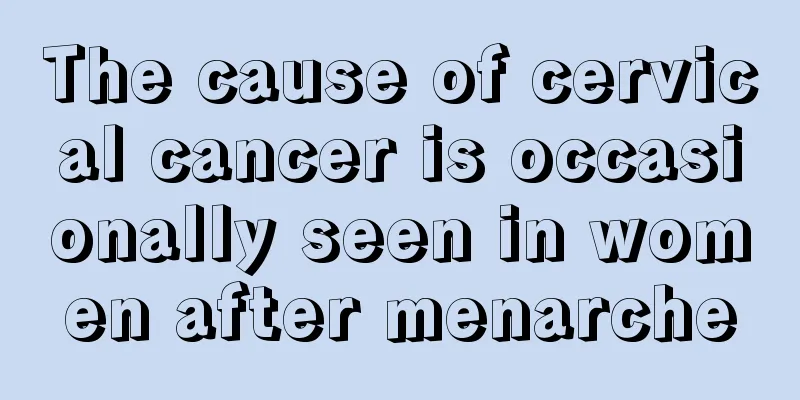What to do with clothes after a bone scan

|
We know that bone scan is the common name for "bone imaging", which is one of the commonly used examination items in nuclear medicine. Isotope whole body bone scan uses radionuclides to detect morphological or metabolic abnormalities of bone tissue. To a certain extent, bone scans have a certain amount of radioactivity, and this radioactivity is harmful to the human body. So let’s take a look at what we should do with our clothes after a bone scan! 1. Medical significance Bone scans can detect bone metastases at an early stage. Therefore, for patients with a mass of unknown nature, the presence of bone metastases means that the mass is malignant, that is, it has metastasized to the bones. For patients who have been diagnosed with cancer, it helps to clinically stage the cancer, that is, to determine whether it is in the early or late stages, so that doctors can decide which treatment method to use, whether it is local surgery, radiotherapy, or systemic chemotherapy, and whether it is necessary to perform extensive and thorough eradication in the case of local surgery. Cancer patients who have undergone treatment can observe the presence of bone metastasis and changes in the extent of bone metastasis through regular repeated bone scans (each scan is performed every 3 months to 1 year) to monitor the efficacy of treatment and tumor recurrence. Bone scanning can determine whether the pain is caused by arthritis or para-articular bone lesions, whether it is bone and joint lesions or visceral or neural pain. It can diagnose various metabolic bone and joint lesions, and diagnose osteomyelitis early in limb soft tissue inflammation. It can detect subtle fractures in special parts such as metatarsal bones and ribs, observe the blood supply and survival of transplanted bones, and evaluate the treatment effects of the above-mentioned benign and malignant bone and joint lesions. Therefore, bone scanning is a routine examination item for cancer patients abroad and is also the most important examination item in the nuclear medicine department of large comprehensive hospitals in China. 2. Whole body bone scan Isotope whole-body bone scan uses radionuclides to detect metabolic abnormalities in bone tissue throughout the body, and obtains whole-body skeletal images in one scan. Isotope bone scanning may be used in the following situations: 3. Preoperative bone scan (1) Early diagnosis of primary bone tumors and soft tissue and lung metastases of bone tumors; (2) Check for unexplained bone pain; (3) Selection of bone pathological histological examination sites; (4) Develop a radiotherapy plan; (5) Preoperative staging and post-treatment follow-up of other systemic tumors such as lymphoma, breast cancer, lung cancer, and prostate cancer; (6) Screening of patients suspected of having tumors; (7) Diagnosis and follow-up of inflammatory lesions of bones; (8) Differential diagnosis of bone and joint trauma such as stress fractures and ischemic osteonecrosis; (9) Localization diagnosis of Paget's disease and follow-up after treatment. 4. Differences from CT There are significant differences between nuclear medicine imaging diagnosis ECT (also called SPECT) and CT. Nuclear medicine examinations require the injection of drugs first, using the radioactivity of the drugs to produce images. CT is a machine that emits X-rays that penetrate the human body for imaging! There is a machine called SPECT/CT which does both at the same time and then fuses the images after they come out! This type of examination does very little harm to the body, so don't worry. Generally, everything will be fine after the drug decays in about a day. CT belongs to radiation, and ECT belongs to nuclear medicine. Radiation looks at lesions from an anatomical perspective, while nuclear medicine looks at lesions from a functional perspective. It would be best if you can do SPECT/CT. When doing ECT, if the staff finds that you have suspicious lesions, they will do CT as well. In this way, ECT and CT can be done together without changing their positions. Then, through fusion processing, your lesions can be seen more clearly. And the cost is less than the combined cost of CT and ECT. |
>>: Complications after fracture surgery
Recommend
What to do if you have a dry throat after being discharged from the hospital for nasopharyngeal cancer
These symptoms appear after radiotherapy for naso...
Compound Shuanghua Tablets for Treatment
Cold is a disease that we are very familiar with ...
What can help us quit smoking?
Quitting smoking is very popular among boys. Nowa...
Symptoms of myocardial necrosis
Heart disease is the most serious disease problem...
Do I need to wash off calamine lotion?
Calamine is a very common topical medicine that h...
What to do when your face is itchy and peeling? It turns out there are 6 ways
Itching and peeling on the face is a common skin ...
What is the most effective treatment for onychomycosis?
As the saying goes, if you have onychomycosis, on...
Why does the base of my little finger hurt?
Hands are a part of the body that people move fre...
The most common cause of chronic cor pulmonale, they are actually the culprits
There are many causes of chronic cor pulmonale, t...
How to treat erysipelas of lower limbs
Erysipelas is a common skin disease characterized...
Can eczema heal itself after scabbing?
I believe many people are familiar with the skin ...
What determines whether you get cancer
A report from the World Health Organization shows...
What should I do if my cotton clothes turn yellow?
Clothes made of pure cotton are loved by most peo...
Signs of sexual maturity in boys
When boys enter puberty, most of them will feel s...
Changes in stool after drinking red bean and coix seed
Red beans and barley are common ingredients in ma...









